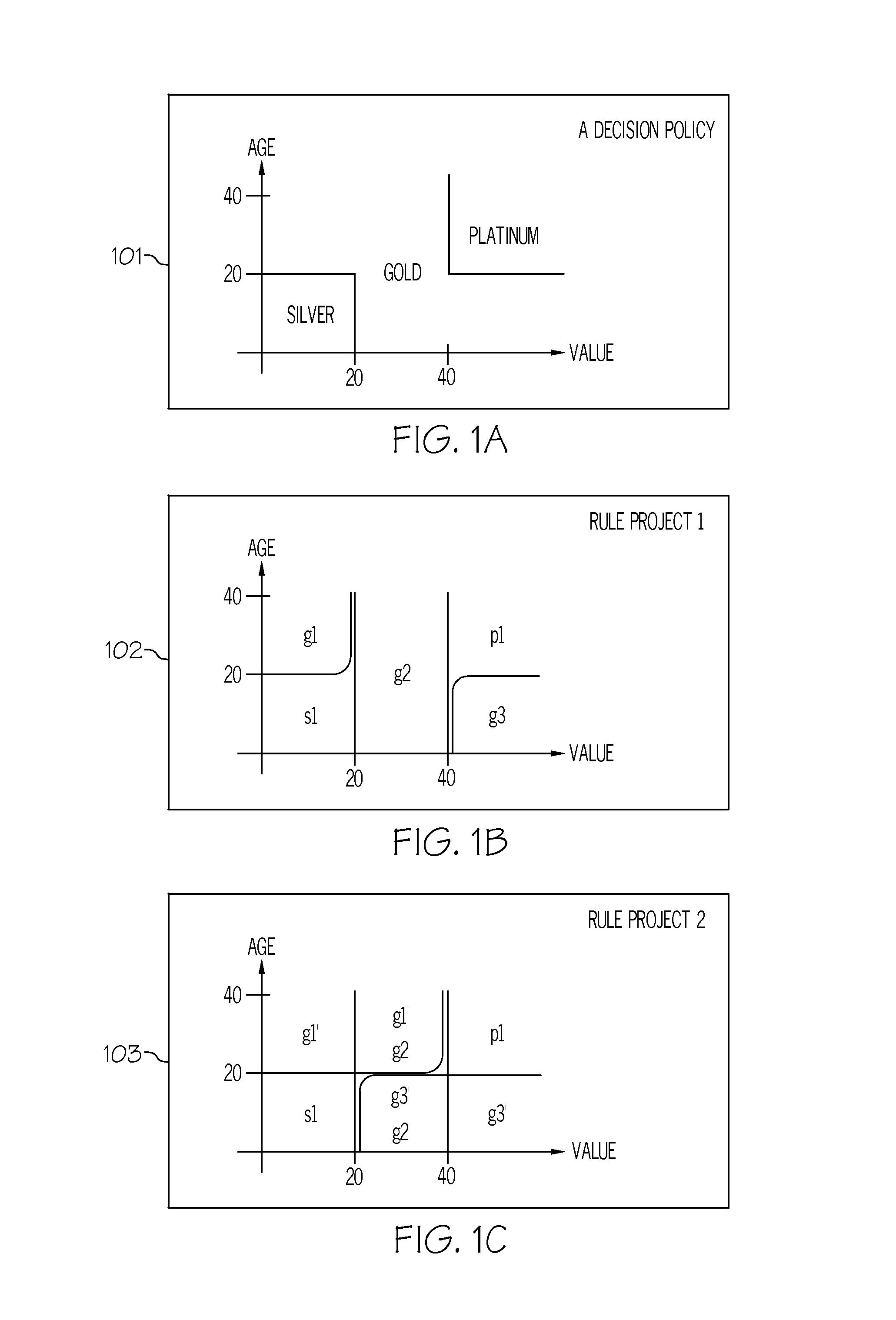Minimizing rule sets in a rule management system
a rule management system and rule management technology, applied in the field of rule management system, can solve problems such as inacceptable if, and redundant rules are difficult to avoid
- Summary
- Abstract
- Description
- Claims
- Application Information
AI Technical Summary
Benefits of technology
Problems solved by technology
Method used
Image
Examples
Embodiment Construction
[0040]The principles of the present invention disclose a method, system and computer program product for computing redundancy-free subsets of business rules of arbitrary form that represents the same decision policy as the original rules. The method, system and computer program product of an embodiment of the present invention guarantee that the computed subset of rules does not contain any redundant rule or non-applicable rule, but has exactly the same decision making behavior as the original rule set without making any assumption about the number and order of rule applications. In particular, the method does not alter the behavior of the rule set even if a single rule is applied. The method, system and computer program product do not limit the redundancy elimination to locally redundant rules that are made redundant by a single rule, but it is capable of identifying globally redundant rules that are made redundant by a combination of other rules. Furthermore, the method achieves t...
PUM
 Login to View More
Login to View More Abstract
Description
Claims
Application Information
 Login to View More
Login to View More - R&D
- Intellectual Property
- Life Sciences
- Materials
- Tech Scout
- Unparalleled Data Quality
- Higher Quality Content
- 60% Fewer Hallucinations
Browse by: Latest US Patents, China's latest patents, Technical Efficacy Thesaurus, Application Domain, Technology Topic, Popular Technical Reports.
© 2025 PatSnap. All rights reserved.Legal|Privacy policy|Modern Slavery Act Transparency Statement|Sitemap|About US| Contact US: help@patsnap.com



